Luigi's Mansion Preview
Luigi steps up to bat when Mario goes missing.
Back in 1993, Luigi became the main character in a game for the first time when Nintendo released an SNES game called Mario is Missing, an edutainment title that taught geography. Since then, it seems Luigi has been dogged by a curse that keeps any of the titles he stars in from attaining the killer app status of most of Mario's games. The GameCube launched earlier this month in Japan, and one of the three launch titles was Luigi's Mansion. Is the game really worth picking up at the GameCube launch? Here are our impressions from the final version of the Japanese copy of the game.
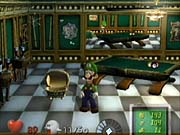
The game finds Luigi exploring a mansion he received as a gift to find his brother, Mario, who's gone missing. Complicating matters, the house is crawling with a wide variety of ghosts who aren't very friendly. Fortunately, in his first encounter with the unruly spirits, Luigi is rescued by Professor Oya Ma, a ghost researcher who lives in the nearby forest. After hearing about Luigi's plight, the professor decides to help him by providing him with a vacuum cleaner, for sucking up ghosts, and the Game Boy Horror, a PDA-like device that serves a variety of purposes. Your mission is to use these powerful tools to eliminate ghosts in the mansion, which will allow you to eventually find Mario.
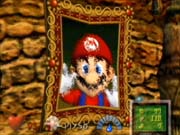
Given all the hardware he's packing, controlling Luigi will take a bit of practice. You'll begin the game with a training session in order to get used to the basic controls and practice the art of capturing ghosts. The control scheme closely resembles that of a console third-person shooter. The analog stick is used for walking or running, while the C stick (the yellow analog stick on the bottom right) is used to aim the vacuum cleaner or the flashlight. The control can also be switched to a strafe mode, wherein Luigi's movement with the analog stick is restricted to strafing and the C stick is used for making turns or changing directions. The green A button for the most part covers all the actions such as opening doors and moving objects. To suck up ghosts with the vacuum cleaner, you begin by aiming the flashlight at a ghost. It is better to keep the flashlight off (by holding the red B button down) and only turn it on when the ghost is very close to you. This way, you can easily capture the ghosts before they disappear on you. Once caught in the light beam, the ghost will become alarmed, and a pink heart and a number will be displayed. You should then immediately turn your vacuum cleaner on by holding the R trigger. The number indicates the stamina of the ghost, and players must keep the vacuum on until it reaches zero. While the ghost is being sucked into the vacuum, it will move violently around the room, so you must tilt the analog stick in the opposite direction of the ghost's movement--sort of like pulling on a fishing rod--in order to keep the ghost from escaping. Rotating the C stick rapidly also helps reduce the ghost's stamina. Getting rid of ghosts provides you with hearts, which is the only method to heal yourself in the game. You'll also occasionally find treasure chests that may contain valuables or keys to locked doors.
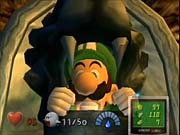
In addition to normal ghosts, there are other spirits to worry about. Professor Oya Ma tells Luigi that he had a collection of paintings with ghosts trapped in them. He believes another group of spirits is responsible for freeing the ghosts from the paintings and is also probably responsible for Mario's disappearance. You'll encounter ghosts from the paintings in almost every room of the mansion. Sometimes you can see them the moment you enter, and other times, you will have to do something inside the room before they'll appear. There are several books within the mansion that serve as hints and tips regarding these ghosts. The Game Boy Horror helps you capture them as well. Turning it on (with the X button) switches Luigi's view into a first-person perspective. Once in this view, you can point the crosshairs at a ghost and a message will pop up giving you a hint on how you might be able to capture it. After getting rid of the ghosts, you will then have to search the room using the radar built into the Game Boy Horror to make sure the room is really clear. When using the radar, a yellow light blinks and a "pinging" sound is made, and as you zero in on the ghost, the light turns red and the pings grow faster. This is when you should immediately pull out your vacuum cleaner and prepare to Hoover a spirit. Sometimes the radar detects decoys instead of the actual spirits, so beware. On a related note, you can also use the Game Boy Horror in times when you notice anything suspicious inside a room, in the hopes of finding items or the entrance into another area.
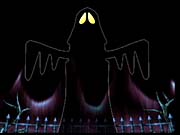
The game plays out in linear fashion--it's divided into several missions with a boss-type ghost at the end of each. Though each mission doesn't really have an objective per se, you just go along with the story and trigger events that move it along.. One of Mario's savvy support characters, Toad, can be found in different areas of the mansion, and he serves as a save point. Sometimes he may ask you for favors such as finding items, though, so be prepared to be a good Samaritan. Eventually, you will be required to find three medallions that will allow you to absorb the fire, water, and ice elementals found in the game. The elementals can be found where you commonly see them in real life--fire in candles, water from the kitchen faucet, ice from the refrigerator, and so forth. Some of the ghosts in the later portions of the game can only be eliminated by using one of these elements in tandem with the vacuum cleaner. For example, a ghost with the water property will require you to launch the fire elemental (using the L trigger) first and then suck it up with the vacuum cleaner. Luigi can only hold one element at a time, but for the most part, the elementals can be found nearby whenever you'll have to use them, so there isn't much backtracking to do.
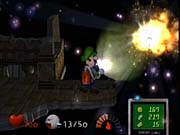
Though Luigi's Mansion offers some challenge in figuring out the different ways to catch the ghosts at first, constantly having to suck the ghosts up becomes relatively tedious after a while. The game eventually falls into a cycle of "find key, open locked room, suck ghost, repeat." The spirits are particularly annoying because they have the ability to move from one room to the next, and you'll end up moving back and forth until you drain their stamina and are finally able to eliminate them. Players don't have much choice in terms of dealing with the ghosts--whether they're just the regular ghosts, the ones from the pictures, or the spirits--because you must capture most of them to progress through the game, so you can't simply ignore them. Like in most games of this type, the controls can also become a nuisance at times. There are certain situations in the game where players are required to be precise when aiming. Because the camera angle does not shift and remains fixed in a quasi-2D format (although it does switch in certain areas), though, players may not be sure if they are aiming correctly. For example, if the target is at four o'clock, you can guess where Luigi should be facing, but chances are, you will miss the target. You can take the risk by changing into the first-person view using the Game Boy Horror, but when in this mode, Luigi can't move and is susceptible to getting hit by the ghost's attacks. One way to avoid this is simply positioning Luigi perpendicularly to the target, but only if opportunity allows it. The graphics make use of light and shades well, demonstrating the capabilities of the hardware. Objects like curtains, tablecloths, and paper money are conveyed well, with smooth animation--particularly when you are using the vacuum cleaner on them. The audio also blends well with the game, though like in most horror-themed games, there isn't much variety in the musical compositions to begin with. The short loading times are an indication that Nintendo really wanted to keep the flow of game smooth without frustrating the users. One of the reasons Nintendo has been hesitant to use the CD-ROM format are the load times associated with it, but the company seems to have worked out a way to handle them in Luigi's Mansion.
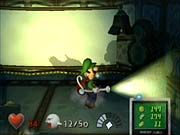
Having spent quite a bit of time with the import version, we have mixed feelings about Luigi's Mansion. It offers a nice showcase for the GameCube's graphical power and can be engaging for a while. The problem right now is that it seems to lack that special something to make it a great title. Granted, it's a launch title, but it seems to fall short of the standard set by previous Nintendo launch games. While it has some replay value thanks to some unlockable extras, there isn't enough there to keep players coming back. Hopefully there will be some tweaks to the game before it hits the states in November.
Got a news tip or want to contact us directly? Email news@gamespot.com
Join the conversation